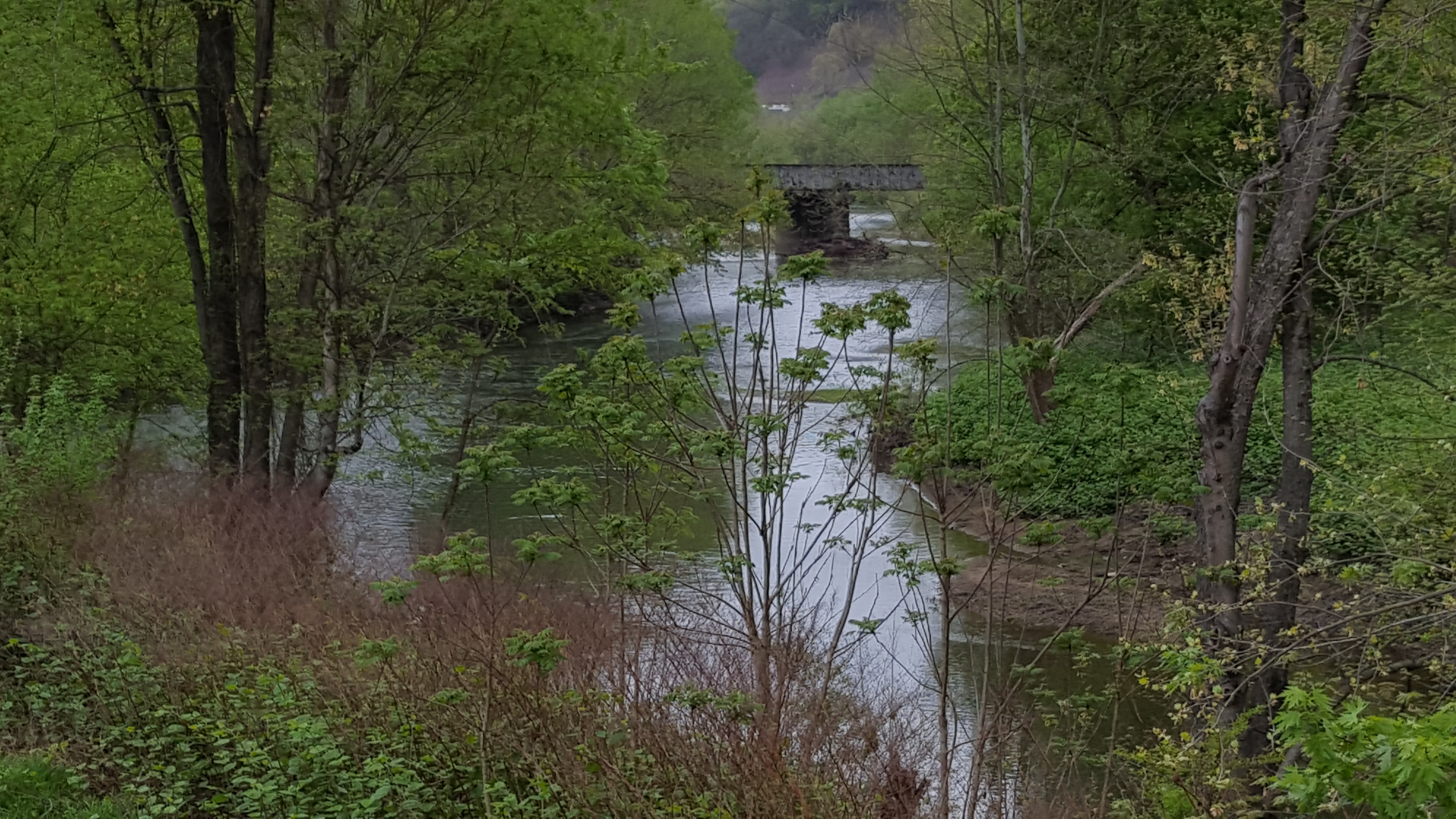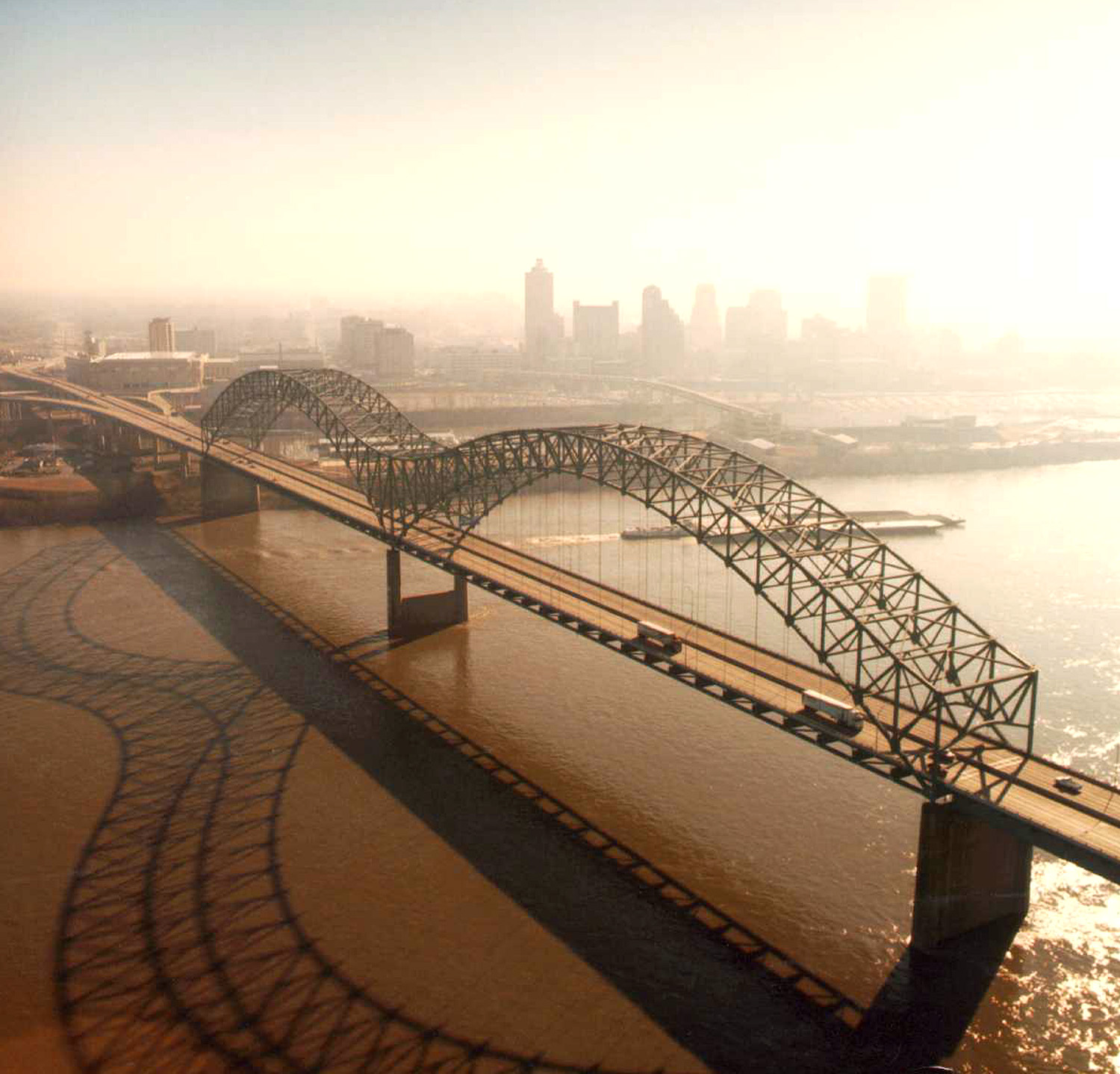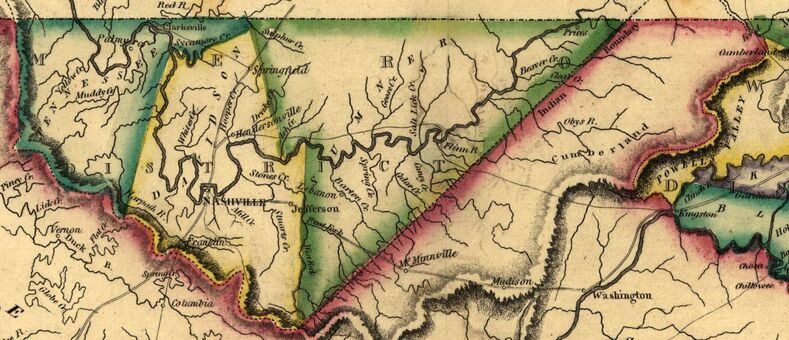|
Tennessee State Route 251
State Route 251 (SR 251) is a west–east secondary state highway in Middle Tennessee. Route description SR 251 begins in rural Cheatham County at an intersection with SR 249 (Sams Creek Road/River Road) south of Ashland City. It winds its way southeast along the banks of the Cumberland River as River Road to cross into Davidson County. It continues southeast as River Road Pike as it enters Nashville and has an intersection with US 70/SR 24 (Charlotte Pike), where SR 251 becomes part of Old Hickory Boulevard. It then continues south to have an interchange with I-40 (Exit 199) before entering Bellevue, where it comes to an end at an intersection with US 70S/ SR 1 and Old Hickory Boulevard continues southward. Major intersections {{jctbtm See also *List of state routes in Tennessee References 251 __NOTOC__ Year 251 ( CCLI) was a common year starting on Wednesday (link will display the full calendar) of the Julian calendar. At the time, it was known as ... [...More Info...] [...Related Items...] OR: [Wikipedia] [Google] [Baidu] |
Tennessee Department Of Transportation
The Tennessee Department of Transportation (TDOT) is a multimodal agency with statewide responsibilities in roadways, aviation, public transit, waterways, and railroads. The mission of TDOT is to provide a safe and reliable transportation system for people, goods, and services that supports economic prosperity in Tennessee. Since 1998, TDOT has been ranked amongst the top five in the nation for quality highway infrastructure. It is primarily headquartered in downtown Nashville and operates four regional offices in Chattanooga, Jackson, Knoxville, and Nashville. Major responsibilities The major duties and responsibilities of TDOT are to: * plan, build, and maintain the state-owned highway and Interstate system of over ; * administer funding and provide technical assistance in the planning and construction of state and federal aid road programs for cities and counties; * provide incident management on Tennessee's Interstate system through TDOT SmartWay, an intelligent transporta ... [...More Info...] [...Related Items...] OR: [Wikipedia] [Google] [Baidu] |
Cumberland River
The Cumberland River is a major waterway of the Southern United States. The U.S. Geological Survey. National Hydrography Dataset high-resolution flowline dataThe National Map, accessed June 8, 2011 river drains almost of southern Kentucky and north-central Tennessee. The river flows generally west from a source in the Appalachian Mountains to its confluence with the Ohio River near Paducah, Kentucky, and the mouth of the Tennessee River. Major tributaries include the Obey, Caney Fork, Stones, and Red rivers. Although the Cumberland River basin is predominantly rural, there are also some large cities on the river, including Nashville and Clarksville, both in Tennessee. Also, the river system has been extensively altered for flood control. Major dams impound areas of both the main stem and many of its important tributaries. Geography Its headwaters are three separate forks that begin in Kentucky and converge in Baxter, KY, located in Harlan County. Martin's Fork starts n ... [...More Info...] [...Related Items...] OR: [Wikipedia] [Google] [Baidu] |
Transportation In Cheatham County, Tennessee
Transport (in British English), or transportation (in American English), is the intentional movement of humans, animals, and goods from one location to another. Modes of transport include air, land (rail and road), water, cable, pipeline, and space. The field can be divided into infrastructure, vehicles, and operations. Transport enables human trade, which is essential for the development of civilizations. Transport infrastructure consists of both fixed installations, including roads, railways, airways, waterways, canals, and pipelines, and terminals such as airports, railway stations, bus stations, warehouses, trucking terminals, refueling depots (including fueling docks and fuel stations), and seaports. Terminals may be used both for interchange of passengers and cargo and for maintenance. Means of transport are any of the different kinds of transport facilities used to carry people or cargo. They may include vehicles, riding animals, and pack animals. Vehicles may inc ... [...More Info...] [...Related Items...] OR: [Wikipedia] [Google] [Baidu] |
State Highways In Tennessee
State may refer to: Arts, entertainment, and media Literature * ''State Magazine'', a monthly magazine published by the U.S. Department of State * ''The State'' (newspaper), a daily newspaper in Columbia, South Carolina, United States * ''Our State'', a monthly magazine published in North Carolina and formerly called ''The State'' * The State (Larry Niven), a fictional future government in three novels by Larry Niven Music Groups and labels * States Records, an American record label * The State (band), Australian band previously known as the Cutters Albums * ''State'' (album), a 2013 album by Todd Rundgren * ''States'' (album), a 2013 album by the Paper Kites * ''States'', a 1991 album by Klinik * ''The State'' (album), a 1999 album by Nickelback Television * ''The State'' (American TV series), 1993 * ''The State'' (British TV series), 2017 Other * The State (comedy troupe), an American comedy troupe Law and politics * State (polity), a centralized political organizatio ... [...More Info...] [...Related Items...] OR: [Wikipedia] [Google] [Baidu] |
List Of State Routes In Tennessee
The Tennessee state routes do not follow a systematic numbering system unlike the U.S. Highway System and some other states' highway systems. The routes are separated into primary and secondary routes though. Many of the routes are hidden in that they are overlaid on U.S. Routes and not signed. The mile markers throughout Tennessee, however, show the state route number for these hidden routes. The Tennessee Department of Transportation (TDOT) maintains these routes under the "State Highways" title of state law, but designates them as "state routes". The triangle marker design was the only design until November 1983, when Tennessee divided its routes into primary routes and secondary or "arterial" routes with the adoption of a functional classification system, creating a primary marker and making the triangle marker the secondary marker; primary marker signs were posted in 1984. __TOC__ List ... [...More Info...] [...Related Items...] OR: [Wikipedia] [Google] [Baidu] |
Tennessee State Route 1
State Route 1 (SR 1), known as the Memphis to Bristol Highway, is a mostly-Unsigned highway, unsigned State highway (US), state highway in the U.S. state of Tennessee. It stretches all the way from the Arkansas state line at Memphis, Tennessee, Memphis in the southwest corner of the state to Bristol, Tennessee, Bristol in the northeast part. Most of the route travels Concurrency (road), concurrently with U.S. Route 70 in Tennessee, U.S. Route 70 (US 70) and U.S. Route 11W in Tennessee, US 11W. It is the longest highway of any kind in the state of Tennessee. The route is signed as both in the state of Tennessee, a Primary and Secondary Highway (at different times throughout its designation) In 2015, the Tennessee Department of Transportation erected signs along SR 1 showing motorists they are traveling on the Memphis to Bristol Highway, Tennessee's first state road. TDOT installed the signs at every county line while it celebrated its 100th anniversary. Route description Memphi ... [...More Info...] [...Related Items...] OR: [Wikipedia] [Google] [Baidu] |
Interstate 40 In Tennessee
Interstate 40 (I-40) is part of the Interstate Highway System that spans from Barstow, California, to Wilmington, North Carolina. In Tennessee, I-40 traverses the entirety of the state from west to east, from the Mississippi River at the Arkansas border to the northern base of the Great Smoky Mountains at the North Carolina border. At a length of , the Tennessee segment of I-40 is the longest of the eight states on the route, and the longest Interstate Highway in Tennessee. Sometimes known as "Tennessee's Main Street", I-40 passes through Tennessee's three largest cities—Memphis, Nashville, and Knoxville—and serves the Great Smoky Mountains National Park, the most visited national park in the United States. It crosses all of Tennessee's physiographical provinces and Grand Divisions—the Mississippi Embayment and Gulf Coastal Plain in West Tennessee, the Highland Rim and Nashville Basin in Middle Tennessee, and the Cumberland Plateau, Cumberland Mountains, Ridge-and-Val ... [...More Info...] [...Related Items...] OR: [Wikipedia] [Google] [Baidu] |
Tennessee State Route 24
State Route 24 (SR 24) is an unsigned west–east state highway in Tennessee, as it coincides with U.S. Route 70 (and U.S. Route 70 Business in Lebanon) and U.S. Route 70N for its entire duration from Nashville to Crossville. The road begins in western Nashville (junction of Memphis-Bristol Highway and Charlotte Pike) and ends in Crossville (junction of West Avenue & Sparta Highway). It runs alongside Interstate 40 for its entire length. There are no "Tennessee 24" signs along the route, although the designation can be seen on the route's mile markers. Route description Davidson County SR 24 begins in Davidson County at an intersection with US 70/ US 70S/ SR 1 on the west side of Nashville. It goes east as the unsigned companion route of US 70 through a wooded area to an intersection with SR 251 (Old Hickory Boulevard). They continue east by some businesses before having an interchange with I-40 (Exit 201). They continue east along Charlotte Avenue by some more businesse ... [...More Info...] [...Related Items...] OR: [Wikipedia] [Google] [Baidu] |
Tennessee State Route 249
State Route 249 (SR 249) is a north–south secondary state highway located in Middle Tennessee. The route is located entirely In Cheatham County. Route description SR 249 is one of three state routes in Tennessee that begins and ends with an interchange along a freeway or interstate. The others being SR 385 and SR 109. any type. Its southern and northern termini are with I-40 and I-24 in the southern and northern ends of the county, respectively. SR 249 begins in Kingston Springs at the Exit 188 interchange of I-40. It continues northward through Pegram to Ashland City, then it turns northeast to end at I-24’s exit 31 interchange in northeastern Cheatham County. Concurrencies involved in this route includes US 70 U.S. Route 70 or U.S. Highway 70 (US 70) is an east–west United States highway that runs for from eastern North Carolina to east-central Arizona. It is a major east–west highway of the Southeastern, Southern and Southwestern United States. ... ( SR 1) ... [...More Info...] [...Related Items...] OR: [Wikipedia] [Google] [Baidu] |
Old Hickory Boulevard
Old Hickory Boulevard is a historic road that encircles Nashville, Tennessee, lying entirely within Davidson County. Originally the road, aided by ferries, formed a nearly unbroken loop around the city. Today, it is interrupted by a lake and several rerouted sections, which consist of roughly . Just over half the distance––is part of several Tennessee state highways, including SR 45, SR 171, SR 251, and SR 254. Unsigned concurrencies exist very briefly along US 31E, US 41/ US 70S, and SR 100. Route description The road is named for President Andrew Jackson, who was nicknamed "Old Hickory." The road intersects with each of Interstates 24, 65, and 40 in the Nashville area twice, contributing to the misconception that there are many roads in Nashville using this name, rather than one broken ring around the city. The route is effectively split into a northern half and a southern half by interruptions caused by the Cumberland River and the Stones River (via Percy Priest ... [...More Info...] [...Related Items...] OR: [Wikipedia] [Google] [Baidu] |
Middle Tennessee
Middle Tennessee is one of the three Grand Divisions of the U.S. state of Tennessee that composes roughly the central portion of the state. It is delineated according to state law as 41 of the state's 95 counties. Middle Tennessee contains the state's capital and largest city, Nashville, as well as Clarksville, the state's fifth largest city, and Murfreesboro, the state's sixth largest city and largest suburb of Nashville. The Nashville metropolitan area, located entirely within the region, is the most populous metropolitan area in the state, and the Clarksville metropolitan area is the state's sixth most populous. Middle Tennessee is both the largest, in terms of land area, and the most populous of the state's three Grand Divisions. Geographically, Middle Tennessee is composed of the Highland Rim, which completely surrounds the Nashville Basin. The Cumberland Plateau is located in the eastern part of the region. Culturally, Middle Tennessee is considered part of the Upland Sout ... [...More Info...] [...Related Items...] OR: [Wikipedia] [Google] [Baidu] |
Davidson County, Tennessee
Davidson County is a county in the U.S. state of Tennessee. It is located in the heart of Middle Tennessee. As of the 2020 census, the population was 715,884, making it the second most populous county in Tennessee. Its county seat is Nashville, the state capital and largest city. Since 1963, the city of Nashville and Davidson County have had a consolidated government called the "Metropolitan Government of Nashville and Davidson County", commonly referred to as "Metro Nashville" or "Metro". Davidson County has the largest population in the 13-county Nashville-Davidson–Murfreesboro–Franklin Metropolitan Statistical Area, the state's most populous metropolitan area. Nashville has always been the region's center of commerce, industry, transportation, and culture, but it did not become the capital of Tennessee until 1827 and did not gain permanent capital status until 1843. History Davidson County is the oldest county in the 41-county region of Middle Tennessee. It dates to ... [...More Info...] [...Related Items...] OR: [Wikipedia] [Google] [Baidu] |





